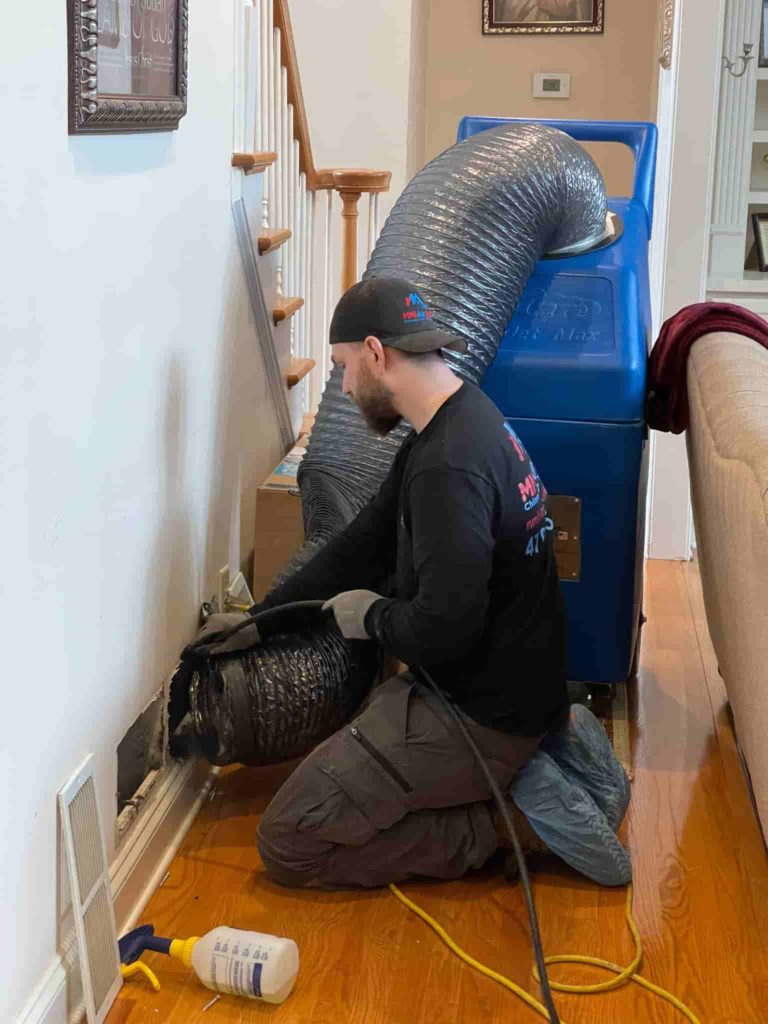If the HVAC technician who maintains your house or office building asks if you’d want blue tube UV light installation inside the unit, you should say yes. What is the purpose of this inquiry? Certain UV lights can help to reduce or eliminate bacteria from flowing in your house or office’s ductwork. This article delves into the details of how certain UV lights can assist sanitize an HVAC system.
We have utilized UV light for a variety of uses over time. Many professionals use UV lights to disinfect water, healthcare equipment, and even food establishment germ lamps.
How UV Light Works
UV lights for HVAC units are made to emit a certain wavelength of light that microbial DNA absorbs. The organisms cannot synthesize the proteins they require after getting around to UV light. Although the UV light does not destroy the germs right away, it disables their potential to cause harm and significantly reduces their lifespan. MMI Home Improvement can help you install the UV light in Buford area.
The amount of air in your home is enormous. Because UV lamps can be damaging to humans, treating them efficiently as a whole is practically impossible. But it’s a different issue inside your air handling unit. Your HVAC system sucks air into its condensing unit and pushes it out through air registers, also known as vents, that are strategically located throughout your home.

Blue Tube UV Light Installation is Helpful or Not?
For years, we’ve been putting blue tube UV lights in houses. It is the original UV light system with low voltage. When it comes to eradicating germs in your air ducts, we have found the blue tube to be the most successful. You will experience a difference in the quality of the air in your house after blue tube UV light installation.
This original low-power light kit for your HVAC system has an award-winning patent. The light’s manufacturers are so confident that a lifetime warranty backs it. Coils make up the majority of your HVAC system. Mold prefers to survive in the cold, which is why it thrives within your air conditioner. The blue tube UV light can kill the debris and other pollutants by demonstrating them. Mold growth on the coil can shorten the life of the HVAC unit and reduce its performance. It can also spread these toxins throughout your home, creating allergies and health problems in people who are allergic to mold. Because the air must pass over the UV light as it circulates, installing the UV light within your evaporator unit makes total sense.
Indoor Air Quality Improvement
Your air filter will not be sufficient to prevent all of the harmful particles from entering your home. Yes, the filter is an excellent stopper and is the first layer of protection. The issue is that there is more pollution on the outside of your home than there is on the inside. When using a UV light, you’re supercharging your HVAC system’s purification capabilities. A UV light would be extremely beneficial if you have children with health difficulties or a construction worker in your home.
Limits of UV Lights
Because dirt and dead fungi will still be there, UV lights for your HVAC will not ease your allergy symptoms. In addition, if your HVAC system’s ducts are broken or leaking, the vacuum formed in the ducts may pull in new contaminants from attics and crawl spaces, reducing the UV light’s efficiency. UV light is only useful when bacteria come into contact with its light spectrum. Any of the pollutants indicated above that are insulated from its light spectrum will be able to live.
Installation Method of UV Lights
You should prefer to install UV lights inside your home’s evaporating unit by a skilled air conditioning expert. The light must be connected to the HVAC evaporation unit only to turn on while the system is running. Before installing the equipment, the technician must properly clean the air handling unit and inspect the ductwork for problems. It will ensure that the UV light system operates at its best.
Today’s energy-efficient houses place a premium on sealing every gap and crevice to keep conditioned air from escaping. Regrettably, this has produced the ideal conditions for these microbes to flourish. UV lights installed in HVAC systems can help reduce or even remove these dangerous contaminants.
Air Filtration
To trap bigger pollutants, professionals recommend using a Highly Efficient Particulate Air (HEPA)-level air filter. It is significant because particles can protect microorganisms from UV radiation assault. The CDC recommends utilizing ultraviolet germicidal irradiation (UVGI) to supplement HEPA filtration as an air-cleaning strategy. MMI professionals are available for air duct and Dryer Vent Cleaning in Buford.
Types of Systems
There are two types of UV light installations for HVAC: air sterilization and coil sterilization. Air sterilization is also known as an In-Duct UVC system, and it sanitizes the air as it circulates through the return vents using UV-C radiation. The UV-C light is maximized in all dimensions by improving the reflective surface within that segment of the ventilation system, making it more efficient.
Professionals recommend using UV-C lamps in coil sterilization to target sensitive and problem-prone elements such as cooling coils, filters, and condensation pans. It enables microbial growth to target difficult-to-reach locations like grooves, fins, edges, and seams.
